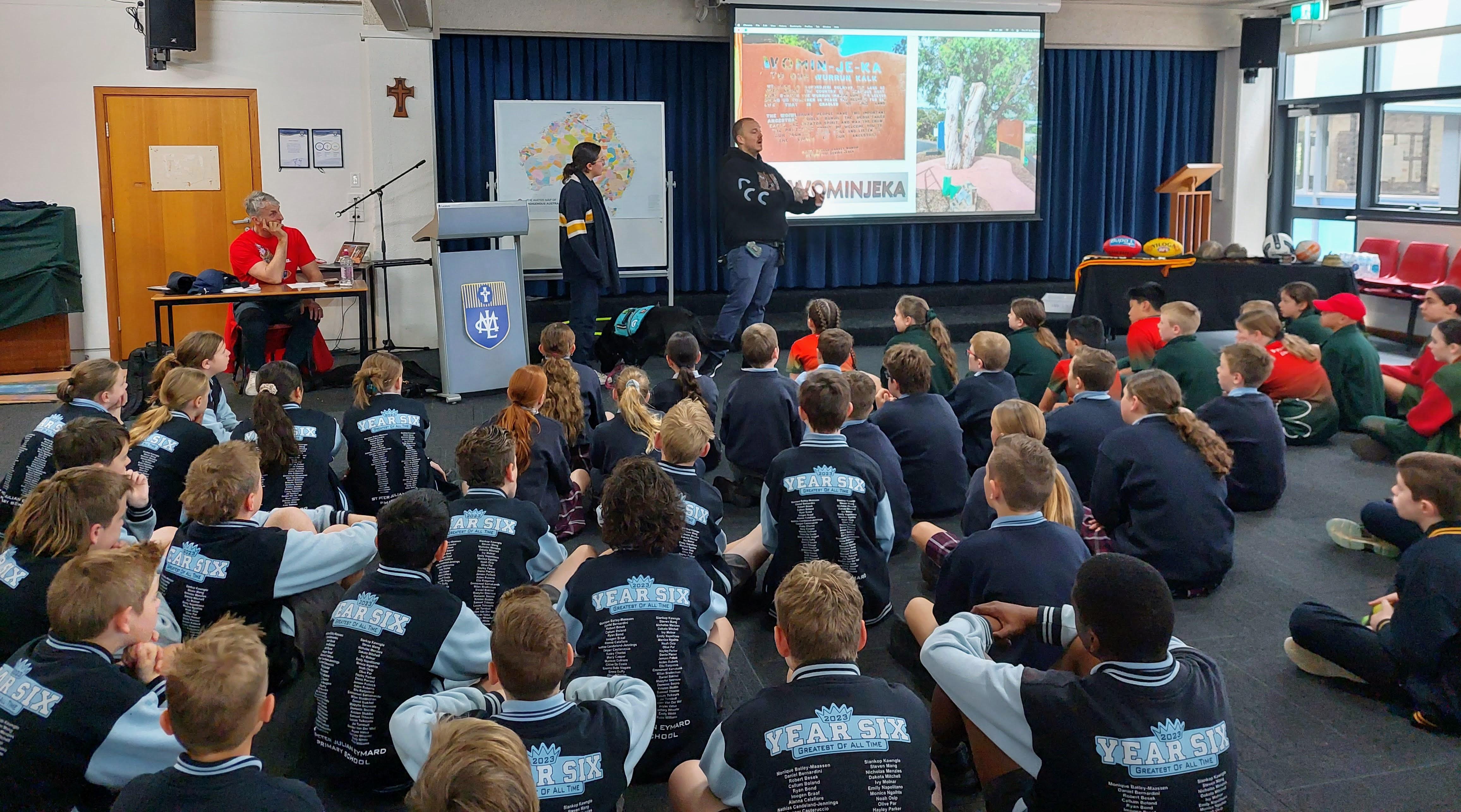On Thursday 31 August, MLMC hosted its inaugural Yarning Conference to celebrate the rich history, culture and language of the Wurundjeri, traditional custodians of the land on which we learn and teach.
Our 100 invited primary school participants on the day were from Lilydale Primary School, St Patrick’s Primary School (Lilydale) and St Peter Julian Eymard (Mooroolbark).
‘Yarning Circles’ in First Nations cultures are defined by Aboriginal and Torres Strait Islander peoples as “a conversational process that involves the telling of stories as a way of passing on cultural knowledge” which “provide a safe place for all to speak without judgement” (Source: https://www.newcastle.edu.au)
Our Yarning Conference was facilitated by a number of our First Nations students with their student allies, guided and generously supported by the staff from the Victorian Aboriginal Child Care Agency (VACCA). MLMC staff members Mr Michael Dale, Mrs Tina Tasiopolous (author of Bunjil: The Eagle) and Mr David Banfield (marngrook in indigenous culture) provided excellent sessions for our visiting students.
One outstanding aspect of many on the day was the highly-visible and authentic leadership shown by MLMC students. Year 10 students Olivia T (Wurundjeri-Woiwurrung language) and Amelia I (reconciliation banner) led their sessions and did a brilliant job. They were strongly supported by student leaders from Year 10 — Coco O; Year 9 —Olivia H, Kai T, Brylee A, Tara H, Darcy V; and Year 8 — Jesse D, and Ruby S. These leaders ensured that our young visitors and their adult supervisors were extended the hospitality and logistical support such an occasion demands.
Below some of our students reflect on the experience:
The Yarning Conference was a day where we as young MLMC leaders could share experiences and stories as well as learn something new. I was with VACCA and we did an art project. Art is a big part of First Nations culture as we use it to tell stories that pass through generations. Each primary school student got a few cardboard leaves that they got to share their story on through art. They used Aboriginal symbols and were given free range on what they wanted to create. We then pinned them to a banner which was already decorated with a painting of a manna gum tree; the banners were given to the schools to keep. Some of the VACCA staff brought in their own possum skin which was an amazing learning opportunity for us all to learn the cultural significance it has in indigenous communities. Overall this was an amazing experience and I am so grateful to have been a part of such a wonderful day.
— Amelia I (Year 10 Red)
The Yarning Conference was a day to remember. I, alongside the primary school students, got to learn more about the indigenous Australian communities. It was a great day with many engaging activities to participate in. A personal favourite was the marngrook activity. Mr Banfield taught us the history behind the game of AFL and marngrook. We then had a yarn about it, as well as getting to practice our kicking skills. I thought the day was very beneficial and hope to see the Yarning Conference happen again in future years.
— Tara H (Year 9 Blue)
Our inaugural Yarning Conference was inspired by The Long Walk Foundation, with whom our College has an emerging and authentic partnership. Similar events have been hosted in Melbourne’s north-western suburbs by the Hume and Darebin councils.
Already, the organising committee has been contacted by other local Government and Catholic primary schools that wish to be involved in 2024 — true progress toward authentic reconciliation is made by such collaborations and opportunities to yarn.



